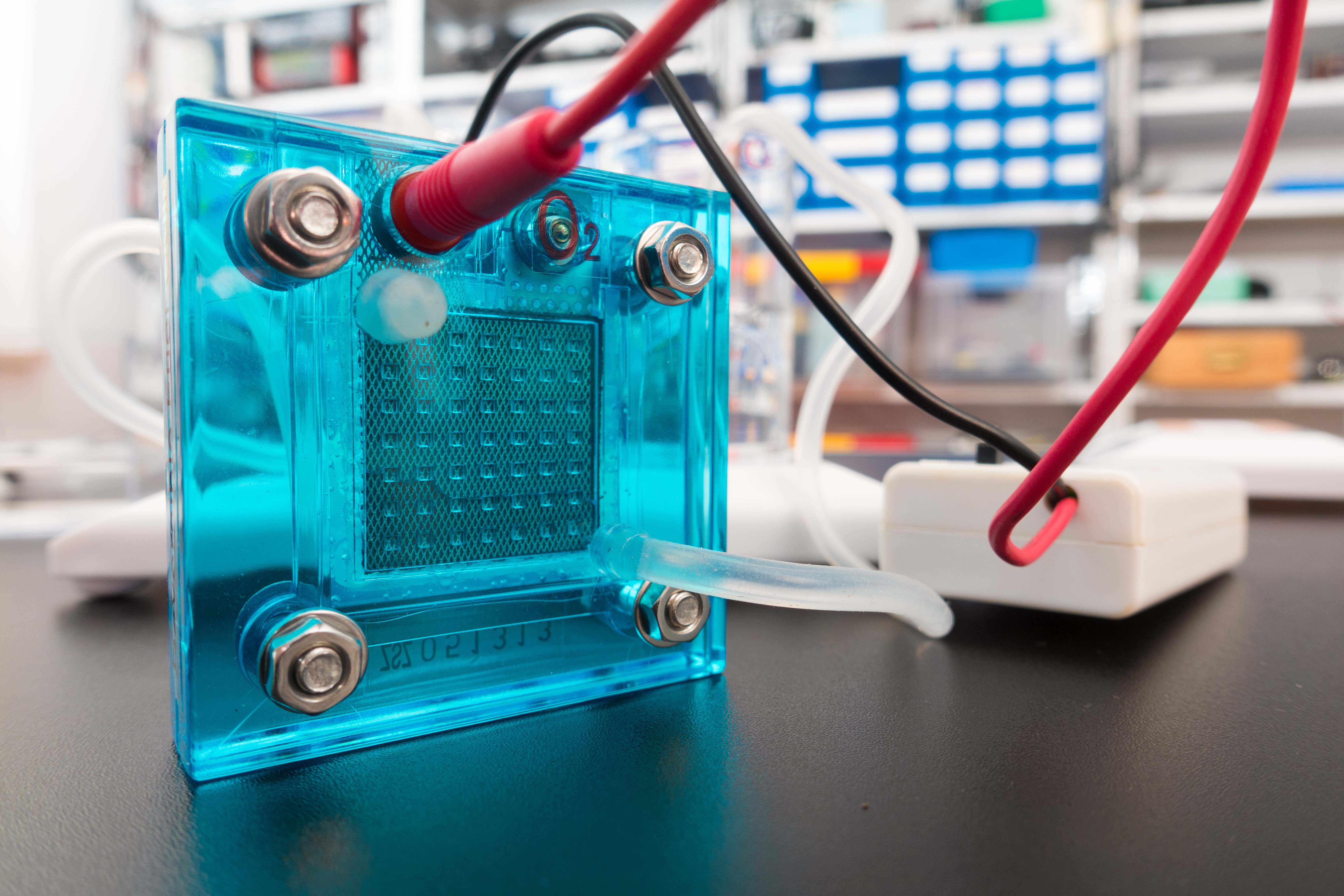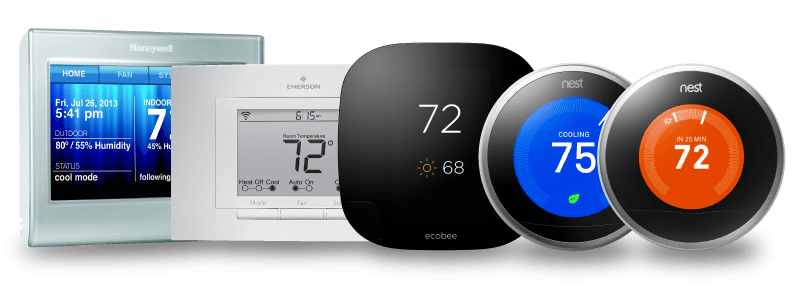Hydrogen fuel cells provide simultaneous heating and electricity, through a reaction that combines hydrogen and oxygen into water. The reaction can also be carried out in reverse, through a process called electrolysis. In electrolysis, electric power is used to separate water into hydrogen and oxygen.
Although the underlying physical principles are very different, this process effectively works very much like charging and discharging a battery: Electrolysis generates hydrogen, which absorbs energy in the process, and this energy can be reclaimed when needed.
As such, hydrogen fuel cells have interesting energy management applications. For one example, if a solar array is generating surplus energy, this energy can be used to produce hydrogen and oxygen. In another example, electrolysis can be used to “absorb” low-cost off-peak energy from the power grid. Then, when heat and electricity are needed, the fuel cell can provide them on demand.
Hydrogen fuel cells have one distinct advantage over conventional batteries: electrolysis occurs separately, so they are not held back by a charge and discharge cycle. The fuel cell can operate indefinitely for as long as hydrogen and oxygen are available to drive the reaction.
Applications of hydrogen fuel cells
Hydrogen fuel cells provide both heat and electricity, but not independently from each other, which makes them better suited for applications where both outputs are required. The total fuel cell efficiency is over 90% when both heat and electricity are used, but it drops to less than 40% if the heat is wasted; conventional lithium-ion batteries are a better alternative in applications dealing exclusively with electric power.
If fuel cells are combined with lithium-ion batteries and hot water tanks, it is possible to maximise energy utilisation. If it isn’t possible to consume both fuel cells outputs completely, any surplus heat or electricity can be stored.
Fuel cells are already being deployed commercially in the Australian market. SEFCA are among the leading providers, and they have already commissioned over 80 integrated fuel cell systems in the country. Residential and hospitality applications are promising, since both electricity and heat and consumed on a daily basis.
Combining hydrogen fuel cells with renewable energy sources
Hydrogen fuel cells can achieve great synergy with existing wind and solar power systems, absorbing surplus energy that would have otherwise been sold to your power company at a rate much lower than the retail price of electricity you are billed – Australian utilities typically purchase your surplus energy at around 20% of the retail price, but you save over 90% with a hydrogen fuel cell.
With this system configuration, you can boost the energy savings provided by a renewable energy system while gaining the convenience of energy storage, to provide electricity and heating on demand even if there is an electric service interruption.
The Australian Association for Hydrogen Energy
The Australian Association for Hydrogen Energy (AAHE) is the authoritative body on all matters related with hydrogen applications in the Australian energy industry, and that includes fuel cells. Of course, the potential of hydrogen goes further: it can be used to power combustion engines, potentially displacing fossil fuels. In other words, hydrogen is unique because it is both a fuel and an energy storage medium – stay tuned for more exciting advances in this area!








